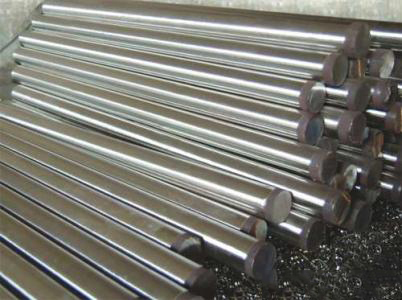- EN 441 stainless steel flat bar Hot rolled / cold drawn
- STS304L stainless steel round bar
- Stainless Steel Hot Rolled Flat Bar
- ISO Stainless Steel Angle Bar
- straight cut stainless steel wire sus304
- 304 bright soft annealed stainless steel wire
- 304L bright soft annealed stainless steel wire
- Stainless Steel Wire
- AISI316 stainless steel round pipe/tube
- 300 Series grade stainless steel round pipe
- AISI/SUS stainless steel pipe/tube cold drawn
- ASTM A249 stainless steel round pipe

Grain erosion of tempering martensite stainless steel
Inquiries : 0 - 2018/8/7 18:53:16
In the process of stainless steel production, many enterprises use liquid ammonia as annealing gas when annealing after cold rolling.SUS403 martensite stainless steels have good toughness, strength, heat resistance and corrosion resistance.The American academy of automotive engineers paper focuses on automotive stainless steel.The chemical composition and tensile properties of these stainless steels are listed first, and then the software models of formability and collision are introduced.With this model, stainless steel can be made into parts, so stainless steel can be considered as a material that can be processed or has great potential for application in the automobile industry.
The improved austenitic stainless steel with high rigidity, high formability and high collision performance is suitable for the newly designed car.Designers can order special materials with a wide range of thickness, performance and surface characteristics.The author thinks that the development of the model is the most important step to explore the potential of austenitic stainless steel.
The steel is widely used in parts with large stresses and complex shapes, such as valves or pumps, piping materials and turbine blades.This kind of steel is quenched and tempered in industrial application.
The Chinese learned: stainless steel wire mesh based on network flow carrier such as sand, powder or residues of sewage pipe, pipe, valves, and in the process of delivery will be effect on turbine blades, interaction between solid particles and martensitic stainless steel materials caused by weight loss, component wall thinning, crack of parts, or even damage.So they have mud erosion problems.In addition, sand dust in the environment will impact the outer wall of these parts, so particle erosion is also a subject to be studied.

The following conclusions can be drawn by studying the particle erosion of SUS403 martensite stainless steel with different tempering treatments:
(1)SUS403 microstructures containing martensite and fragmentary ferrite phases after homogenization are introduced.At the same time, martensite is rich in carbon and ferrite is rich in chromium.When increased the material of tempering temperature from 200 ¡æ to 500 ¡æ, the content of carbon and chromium also will increase, this suggests that a large number of carbide precipitation.In the end, there was a secondary hardening materials at 500 ¡æ.
(2)For all test materials, cutting is the main cause of material loss when the impact Angle is bevel.In this case, the surface damage morphology presents a shallow long cutting groove.In the larger impact Angle, the erosion mechanism is mainly extrusion and cracking.However, for a medium impact Angle, wear is controlled by the transition of the cutting and extrusion mixing mechanisms.Both groove cutting and cracking related pit pressing can be seen.
(3)As the impact Angle increases, the erosion rate of all test materials increases first and then decreases.Use a corrosion rate occurred between the impact Angle of 30 ¡ã to 45 ¡ã.When the impact Angle is less than 30 ¡ã, five kinds of heat treatment of material erosion rate is basically the same, since the martensite and ferrite phase are cutting as the main mechanism.
(4) when the impact Angle is 15 ¡ã and 30 ¡ã, the erosion rate is essentially nothing to do with hardness.After more than 30 ¡ã impact Angle, hardness increased erosion rate.Hardness hedge the impact of corrosion rate at 30 ¡ã ~ 40 ¡ã mutations, this is because the erosion rate of controlled mechanism of change.
(5)For biphase materials made of tempered martensite and ferrite, cracks formed along grain boundary and martensite matrix are common erosion mechanisms.The interconnection of cracks leads to further loss of material.The mixing of two phases in the matrix material results in the weakening of the effect of the hardness of each phase on the hedging corrosion rate.But liquid ammonia is a kind of poisonous gas, belongs to the dangerous chemicals, a slight negligence in the use and management easy to leak, once leakage will cause ammonia poisoning, light person burning sensation in the eye, nose, runny nose, cough, hoarseness, headache, laryngeal edema, the person that weigh can cause paralysis of the central nervous system, the reflective laryngeal spasm or breathing stops quickly die.
The illegal use of liquid ammonia mainly focuses on two aspects.
First of all, the liquid ammonia is improperly placed. Empty and full liquid ammonia bottles are mixed in the production workshop at the same time. There is no special liquid ammonia storage room.
Secondly, the protection facilities are not perfect, many liquid ammonia storage rooms do not have a complete set of anti-leakage devices, liquid ammonia operators do not wear gas masks, other workshop workers do not have gas masks.

